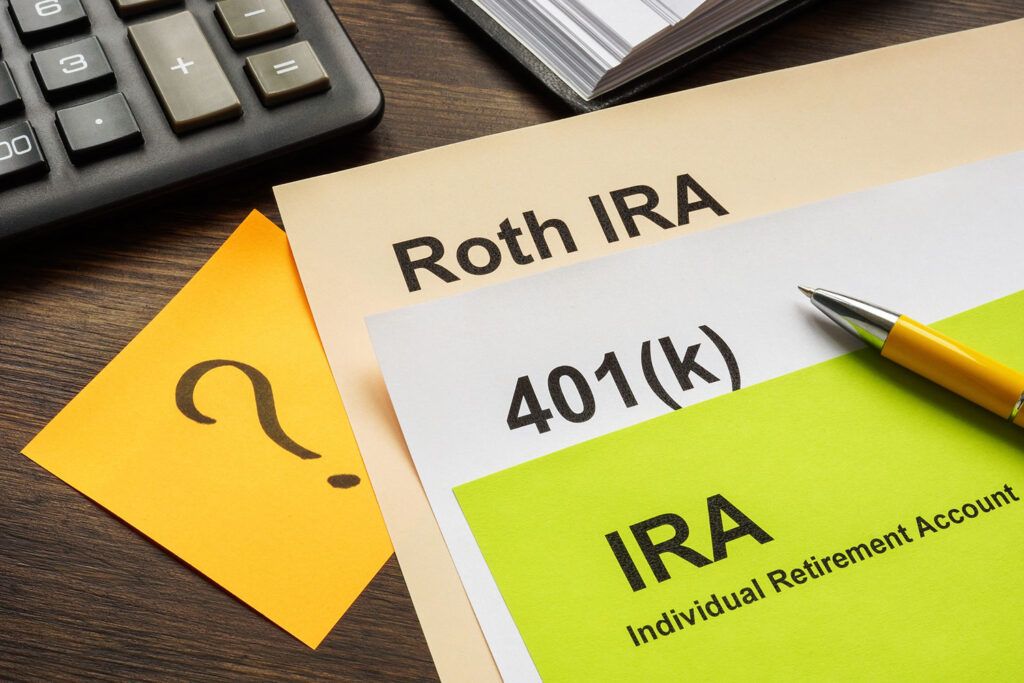Retirement Savings at Different Life Stages

If you’re in your 20s, you’re likely just getting started with your career. Retirement seems like lightyears away; in reality, it’s about four decades, which isn’t much time in the grand scheme of things. It’s never too early to have a retirement plan in place, even if you’ve barely begun earning money.
Sound retirement planning happens at every stage of life. In your 20s, it’s about learning to manage your money, but as you move into your 30s, it’s important to think about an investment strategy and wealth management practices to take you into your middle years. No matter how much money you have or where you’re at in your life, understanding different retirement savings life stages is a must for your future financial assets and financial independence.
Boosting Your Retirement Savings at Different Life Stages
Social Security retirement income can only go so far, and many people worry about the program’s future. Having enough retirement income to live off of depends on the savings and financial goals you set for yourself now. Here’s how to improve your financial future at each stage of your life to ultimately boost your retirement accounts.
Retirement Savings in Your 20s

When you’re in your 20s, you might be just stepping into a career or still figuring out what you want to do to earn a solid income. Even if you haven’t earned a penny to your name yet, it’s not too early to plan and budget for retirement. The earlier you start, the better your chances of feeling financially secure at retirement age.
As you navigate the earliest stages of your money-making career, it’s important to learn how to manage money wisely. Budgeting is easy to begin, and it can help you learn to take control of your finances. In your personal budget, which is basically a financial plan for all your income, make room for emergency and retirement savings.
If you can’t afford to allocate much to each savings account, that’s okay. In your early 20s, you simply want to learn how to manage your money. By the end of your 20s, you should have a better idea of how much you need for bills and necessities and how much you can comfortably afford to save.
This is also a good time to open your first credit card and learn to use it responsibly. Credit cards – when used properly – can be helpful to have when unexpected expenses pop up and can assist in building your credit, which will come in handy when you’re ready to buy your first home.
Average Retirement Savings by Age 30
Many people don’t yet have anything saved for retirement by age 30, and that’s okay. Through your 20s, you may not make enough money to save hundreds to thousands of dollars each month. However, many financial experts agree that people in their 20s should try to have at least one year’s worth of their salary saved in their retirement fund by age 30. So, if you make $40,000 a year, work toward saving $40,000 for retirement.
Retirement Savings in Your 30s

In their 30s, many people begin moving up the career ladder and feeling more secure in their current careers. Advancements and subsequent pay raises typically happen in this period. When you get a boost in regular income, consider placing the extra money into a retirement account. For example, say you get a $1,000 performance bonus or a raise of $5 per hour. If you don’t need it to pay bills, commit the extra cash to your retirement savings.
If your employer doesn’t offer a retirement account for employees, it’s a good idea to ask for one. 401(k) is a popular type of employer sponsored retirement plan to which both you and your employer can make a retirement contribution with each paycheck. This requires a small investment from your pay that adds up to significant wealth accumulation over time, and you can make your additional pay contributions directly to your account.
Retirement plans are the most important investment strategies to help you build your financial future. If a retirement plan isn’t available through your employer, you have the option to open your own, known as a Solo 401(k), or open an individual retirement account (IRA).
Average Retirement Savings by Age 40
By age 40, the median retirement savings is about $40,000-$50,000. So, if you saved enough to match your salary by age 30 and continue to save in your 30s, you’ll be on the right track to far exceed the median retirement savings by the time you reach your 40s.
If possible, try to save about 1.5 times what you saved in your 20s during this decade. If you saved $40,000 in your 20s, you’ll shoot for saving $60,000 in your 30s, giving you $100,000 by the time you reach 40. If this isn’t feasible, try to match what you contributed in your 20s, at minimum.
Retirement Savings in Your 40s

Many Americans are waiting until later to buy their first home, with the average age in the upper 30s. Therefore, many are paying mortgages throughout their 40s along with managing family costs, like paying for their children’s sports and activities and setting aside money for college.
With these additional costs in your 40s, it can feel challenging to save money. Cutting back is the best thing you can do during this decade to keep your retirement savings on track. For example, instead of purchasing a new car, consider looking for a good deal on a used vehicle that you can pay for upfront and not have a monthly payment.
Your 40s are also perfect for taking a deeper look at your investments. Are you contributing as much as you possibly can to your 401(k)? Remember that the more you invest in it, the more your employer also contributes, getting you closer to your retirement goal without adding more of your money. Check that most of your savings are tied into some type of investment, like stocks or bonds, to be eligible for the largest gains.
Average Retirement Savings by Age 50
By the end of your 40s, your retirement plan assets should reach between 3 and 6 times your annual income. If you earn $50,000 a year, you’ll want a minimum of $150,000 saved for retirement, but closer to $300,000 is best. All the saving and cutting back you do in your 40s can help you reach this goal, as will the gains on the investments you make.
Retirement Savings in Your 50s

Once you’ve reached your 50s, it’s time to get serious about your retirement plans. By this decade, you’re likely secure in your career and earning more than you’ve made in the past, so any excess cash flow should quickly be earmarked for retirement.
Plus, your kids might be nearing the age of venturing out on their own, giving you more money to push toward retirement. At this point, you may want to downsize your home, as those extra bedrooms you no longer need could equal a higher-than-necessary mortgage payment.
Also, make your retirement your priority, even if it means making some trade-offs in other areas. Perhaps you send your child some money for food and necessities each month while they’re at college, but they’re responsible for applying to scholarships or completing a work-study program to help them afford tuition rather than you taking out a loan to cover it.
Now that you’ve reached 50, you can begin to make catch-up contributions to your retirement account. Catch-up contributions are additional amounts allowed by the government for your 401(k) and other select retirement plans, like a 403(b). If you can, save up to $7,500 as a catch-up contribution in addition to the annual contribution cap. If you do that each year through your 50s, you’ll have an additional $75,000 saved by the time you reach 60.
Average Retirement Savings by Age 60
By age 60, most people should have healthy 401(k) or Roth contributions stacked for their retirement – ideally, enough to equal about 5-10 times their annual income. That means that if you earn $60,000 when you hit 50, you should have between $300,000 and $600,000 ready to go for retirement. Considering that the median retirement savings by age 60 sits around $160,000, you’ll be far ahead of the pack if you can meet this goal.
Retirement Savings in Your 60s

Your retirement is just around the corner, so it’s important to keep doing what you’re doing to maximize your retirement savings. Still, if you can afford to save more than you have been, do it. Inflation has been on the rise relatively consistently for several years, and your investment strategy should reflect that. Bumping up your savings by even 0.5% or 1% is a wise move to account for inflation.
Also, before you retire, get your finances in order. Paying off your mortgage is an excellent place to start (assuming there’s no prepayment penalty), giving you one less large bill as you head into retirement. Also, consider your best healthcare options. Switching to one of the best health insurance companies now may increase your premiums but could help you pay less in out-of-pocket expenses later.
Average Retirement Savings by Retirement Age
The full retirement age in the United States is currently 66 for people born in 1954 or earlier, which means that you can begin receiving Social Security benefits for retirement at their full amount when you turn 66. People born in 1960 or later reach full retirement age at 67.
By 66 or 67, the median retirement savings is about $200,000. However, the goal is to have at least 10 times your salary saved by retirement age. So, if you make $80,000 a year, you’ll want to shoot for about $800,000 in savings by the time you retire.
Maintaining Financial Health During Retirement

Planning and saving for retirement at every age through adulthood is a must for a healthy financial life cycle. From setting up a mutual fund investment strategy to building wealth with the right asset allocation plan, it’s possible to minimize investment risk and build a solid portfolio for retirement savings.
But your savings up to retirement age is just one piece of the puzzle. After you retire and begin receiving Social Security benefits, you’ll likely still need to tap into your retirement savings. Once you retire, your financial plan switches from saving money to using your retirement savings wisely, allowing you to maintain the money you need to last throughout your entire retirement.
In some cases, that may mean cutting back on travel, finding ways to reduce your monthly bills, or paying off your last few debts as quickly as possible, like your home or student loans. Even if you’ve saved what you believe will be plenty of money to last through retirement, having a budget in place gives you a tangible plan to stick to.
If you want to continue building your wealth or sustaining your income, consider working a part-time job. Even if it’s just a few hours a week, you’ll earn some money while still enjoying time for yourself and your family.
Most importantly, wait to receive your Social Security benefits until you absolutely need them. If you wait until full retirement age instead of requesting your benefits early, you’ll receive your full monthly payment. Waiting until age 70 provides the highest benefit amount you’re allowed to receive, helping you maximize the benefits you’ve earned.
Now is a good time to work with a financial advisor who understands your retirement goals and can help you make the most of your financial planning through retirement. Whether you want to continue building an emergency fund or rethink your investment allocation, a certified financial planner can answer your questions and guide you along the way.
Common Questions
Why is it important to start saving for retirement in my 20s?
Beginning to save for retirement in your 20s is beneficial because it allows you to leverage compound interest over a longer period, which can significantly increase your savings by retirement age. It’s also a formative time to develop sound money management habits, like budgeting and responsible credit use, that lay the foundation for future financial stability.
How much should I aim to save for retirement by age 30?
Financial experts typically recommend aiming to save at least one year’s worth of your salary by the time you’re 30. For instance, if you’re earning $40,000 a year, setting a goal to have $40,000 saved for retirement would be a prudent target.
What retirement savings strategies should I consider in my 30s?
In your 30s, as your income potentially increases, it’s important to start or continue saving consistently in a retirement account, such as a 401(k) or IRA. Taking advantage of employer matches, if available, and increasing contributions when you get raises can effectively grow your retirement funds.
Is it too late to start saving for retirement in my 40s?
It’s not too late to start saving in your 40s. Focus on cutting back on non-essential expenses and maximizing contributions to your retirement accounts. Also, evaluate your investments to ensure they are positioned for growth. Aim to save at least 1.5 times what you saved in your 20s during this decade.
What should my retirement savings goal be by my 50s?
By your 50s, your retirement savings should be about 3 to 6 times your annual income. This sets a solid foundation for the coming years, and you can also make catch-up contributions to your retirement accounts to further bolster your savings.
How can I prepare for retirement in my 60s?
Continue saving as much as possible and consider increasing contributions to account for inflation. Get your finances in order, like paying off your mortgage and choosing suitable healthcare options, to reduce your expenses once you retire.
What are some ways to ensure my retirement savings last through retirement?
Create a budget for your retirement funds, consider part-time work to continue generating income, and delay Social Security benefits until full retirement age, or age 70 if possible, to maximize the monthly benefit. Working with a financial advisor can also help tailor a plan to make your savings last.